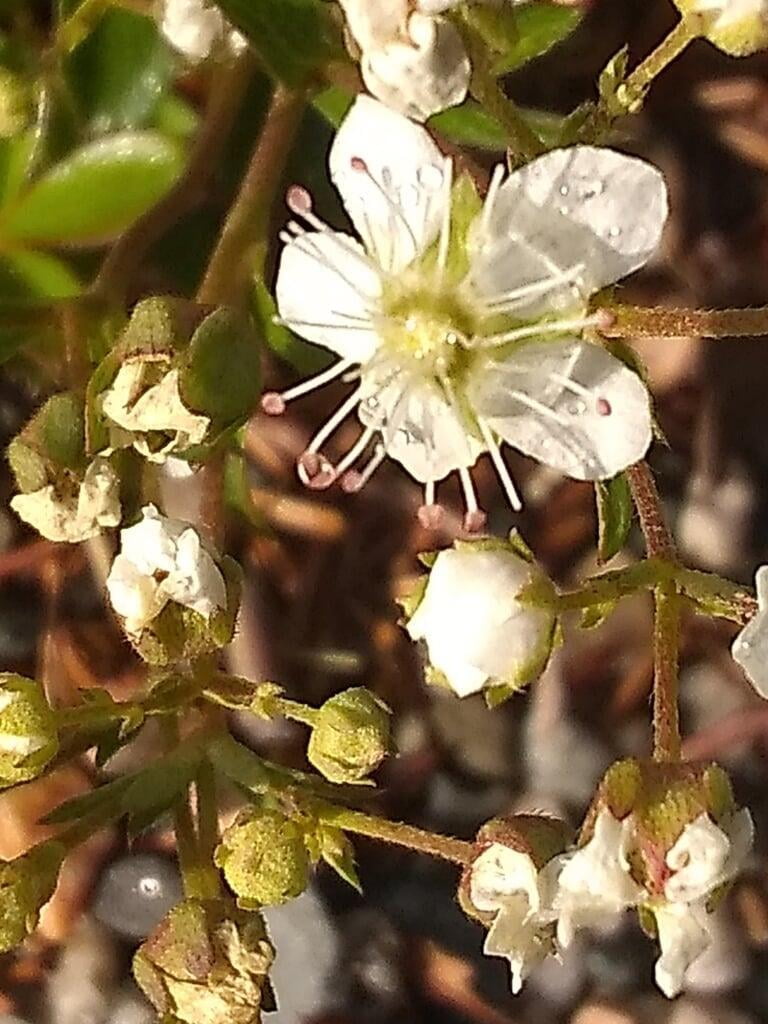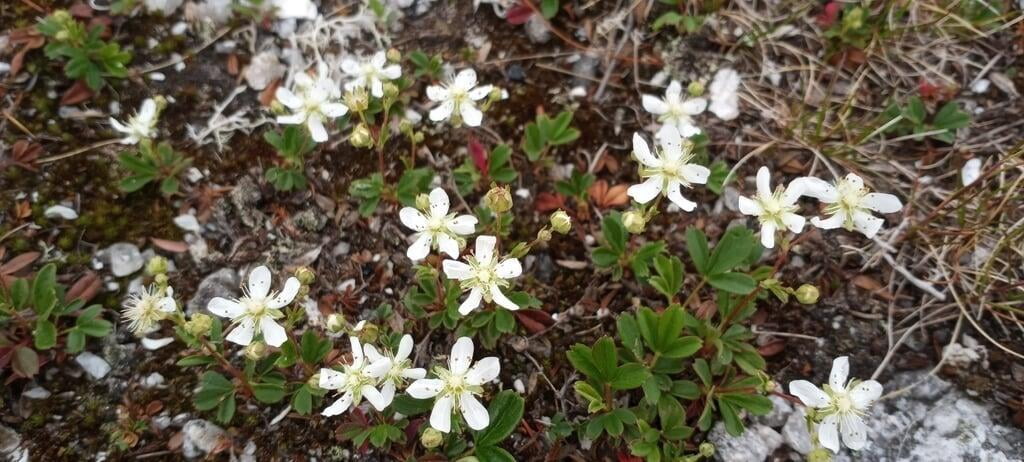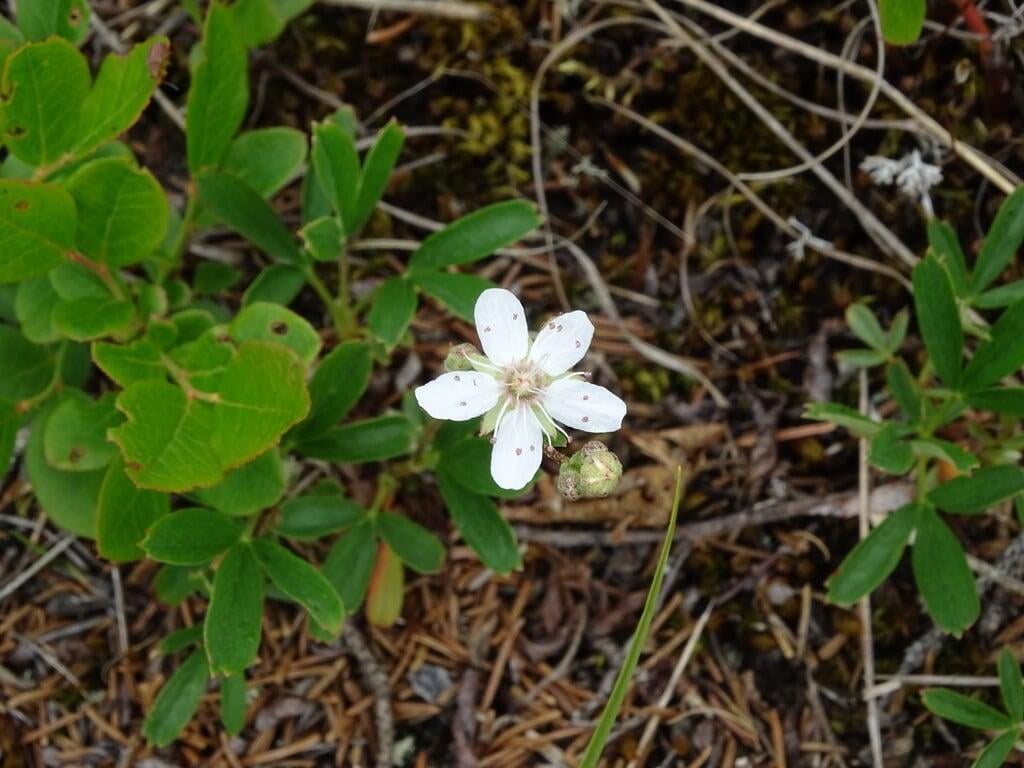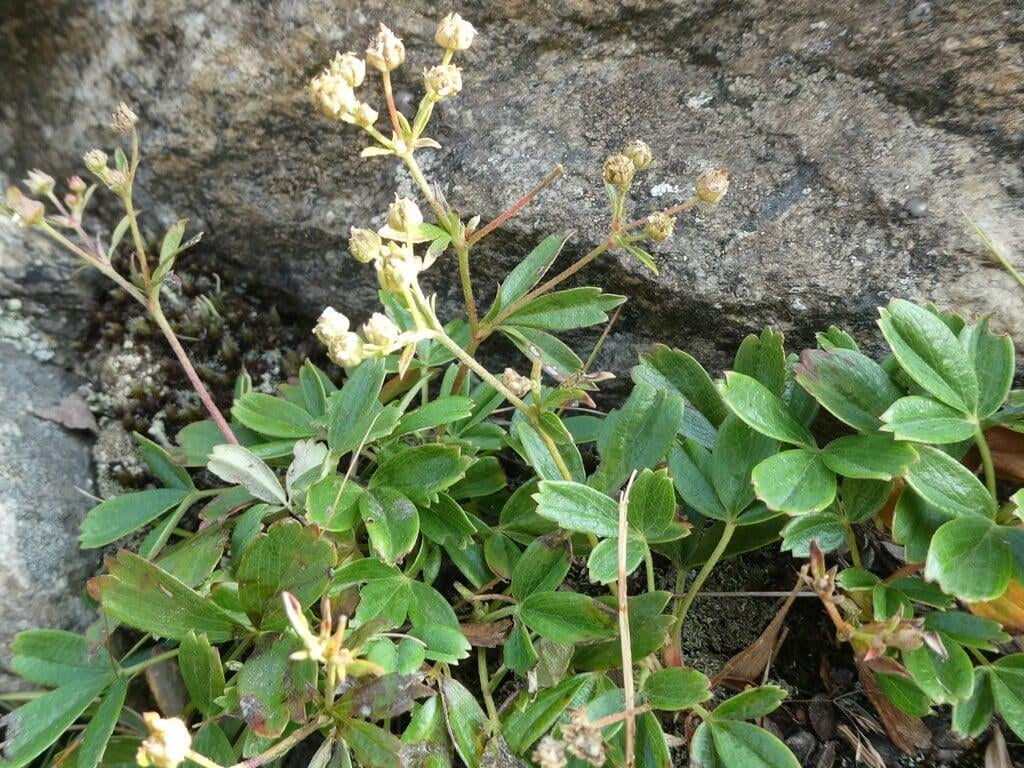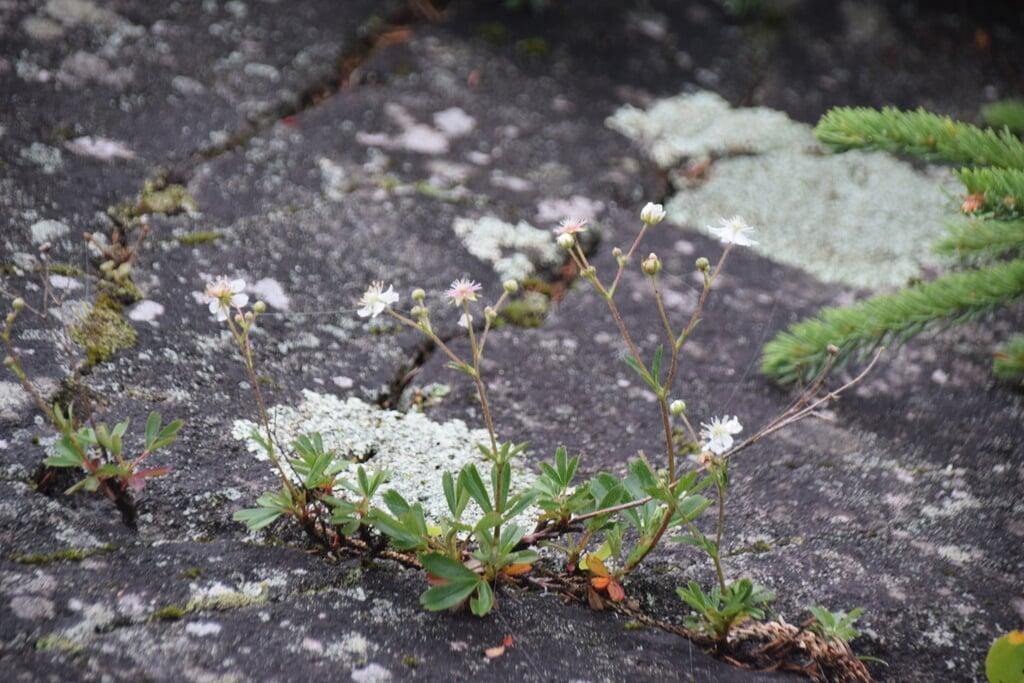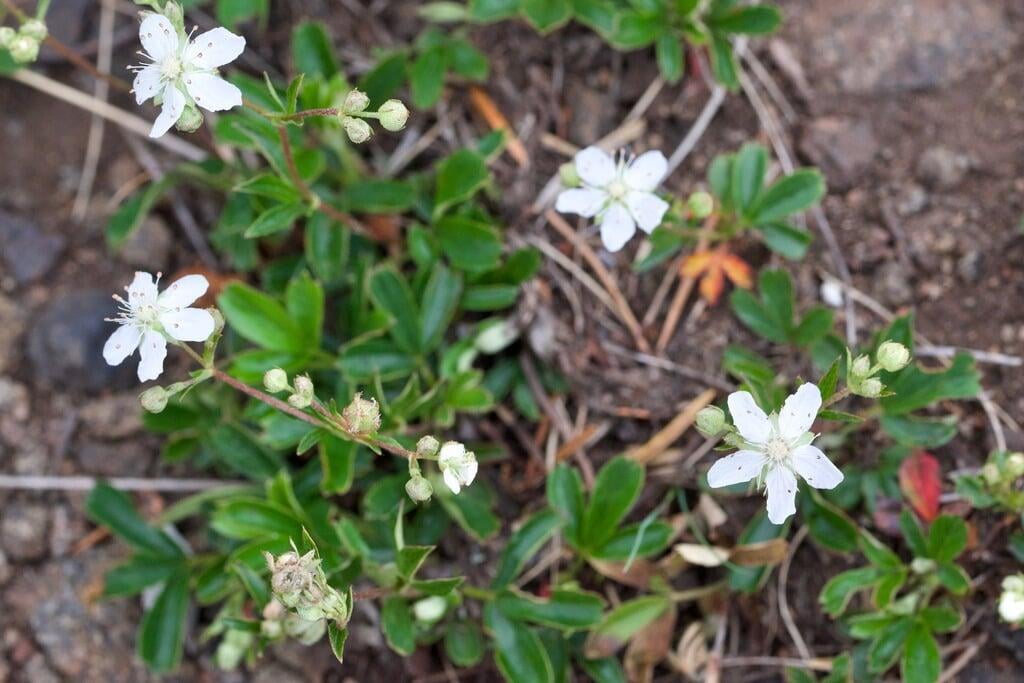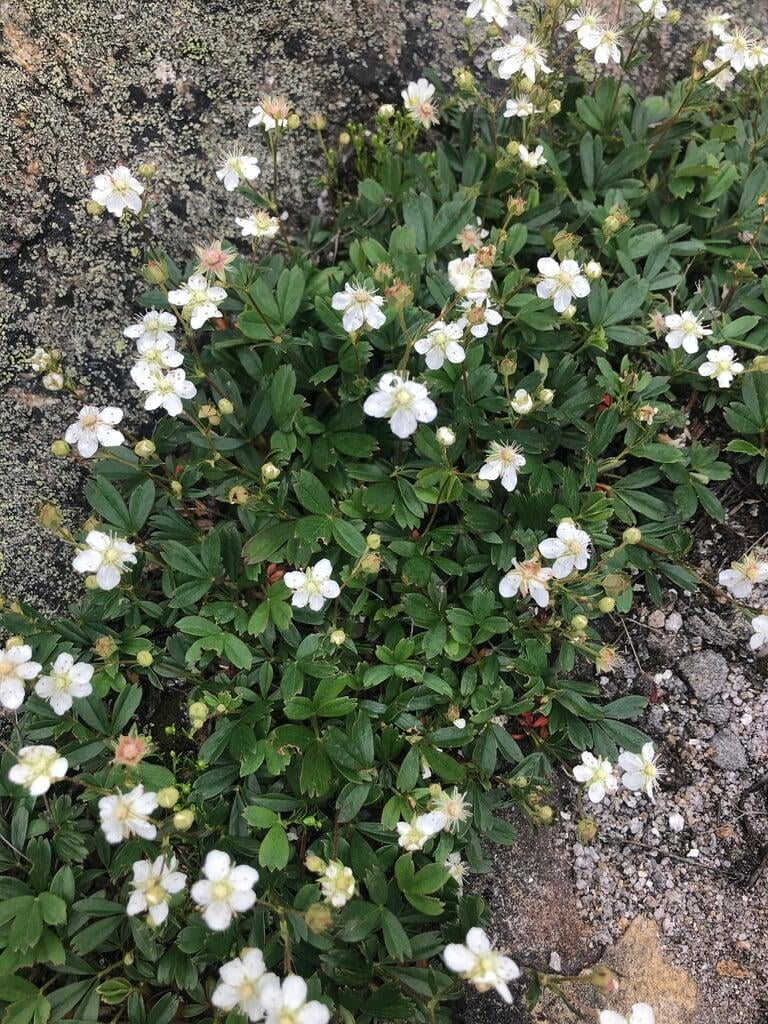Sibbaldiopsis tridentata
Wineleaf cinquefoil Description:
Sibbaldiopsis tridentata, commonly known as Three-toothed Cinquefoil, is a herbaceous perennial plant that is native to North America. It is a member of the aster family and produces small, yellow flowers that bloom from mid to late summer. The plant typically grows to a height of 4 to 12 inches and has deeply lobed, toothed foliage, with basal leaves that form a compact rosette at the base of the stem.
Sibbaldiopsis tridentata is an important plant for wildlife, attracting bees and butterflies with its small, showy flowers. It is also a popular garden plant, particularly for rock gardens, as it is drought tolerant and easy to care for. In addition to its ornamental value, the plant has medicinal properties and has been used by Native Americans to treat a variety of ailments, including respiratory issues and digestive problems. The leaves can be brewed into a tea or used as a poultice to treat minor cuts and bruises.
Overall, Sibbaldiopsis tridentata is a versatile and important plant that is valued for both its ornamental and medicinal properties. Its compact size, attractive foliage, and showy flowers make it an excellent choice for rock gardens and other dry, sunny locations. Its ability to attract bees and butterflies also makes it an important component of many natural landscapes.
Native Range:
Wineleaf cinquefoil is found in mostly the upper Midwest and Northeastern United States. In Minnesota, Wineleaf cinquefoil is primarily found in the Northeastern regions of the state.
Standard Plant Information:
Plant Height: 4" - 12" inches
Bloom Time: June - July
Preferred Habitat: Does well in full sun and poor sandy or rocky soil. Often found along rocky shores, outcrops, and jack pine forests.
Sowing:
For most homeowners, the best option is to scatter seed on the ground by hand broadcasting at a minimum of 16-64 pls ounces per acre. For even coverage, we recommend that you broadcast seed in perpendicular rows across the site to ensure even coverage.
You’ll want to broadcast any grass seed first, which will get raked into the soil lightly. Next, it is ideal to mulch the area lightly with either a clean (no seed) straw or preferably with our native Little Bluestem straw, sold at our retail garden centers. After a light mulching is complete, now it’s time to broadcast your native wildflower seeds, which should not be raked into the soil. A good rain or watering is sufficient to cover the seed.
Planting:
Simply dig a hole in the soil slightly larger than the plant’s roots. Ensure that the soil line of the plant is maintained during the transfer (i.e. the plant should be at the same level with the ground as it was in the pot). Pack any loose dirt back around the plant and make sure you water it well the same day to ensure it has the best chance of survival.
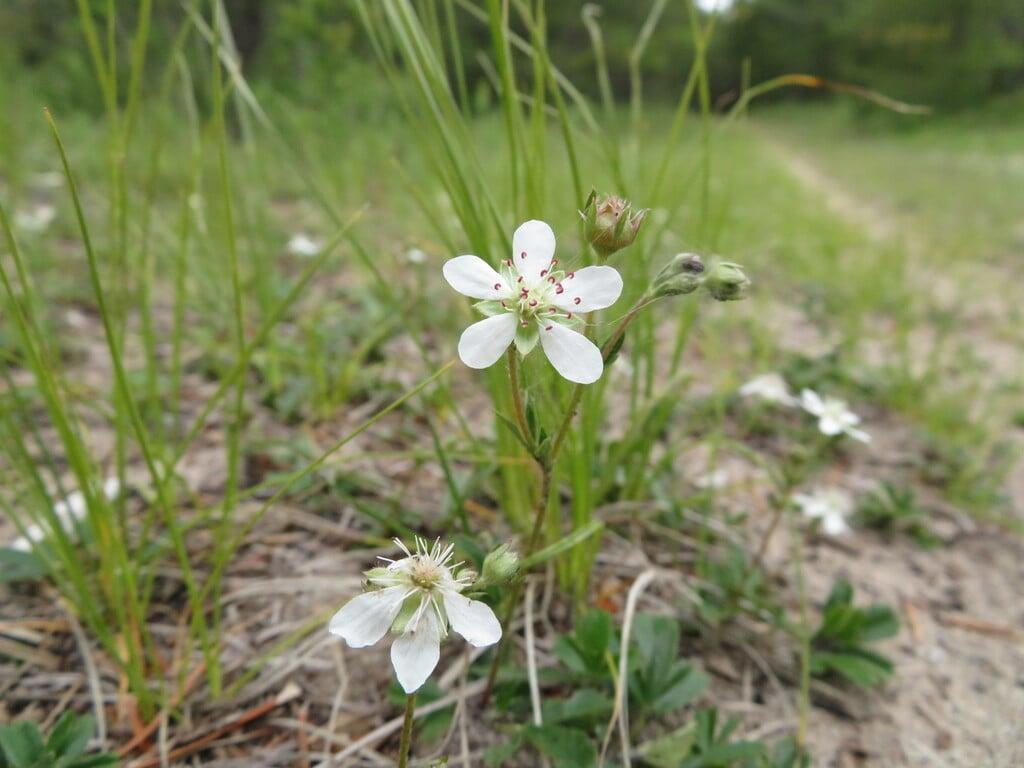
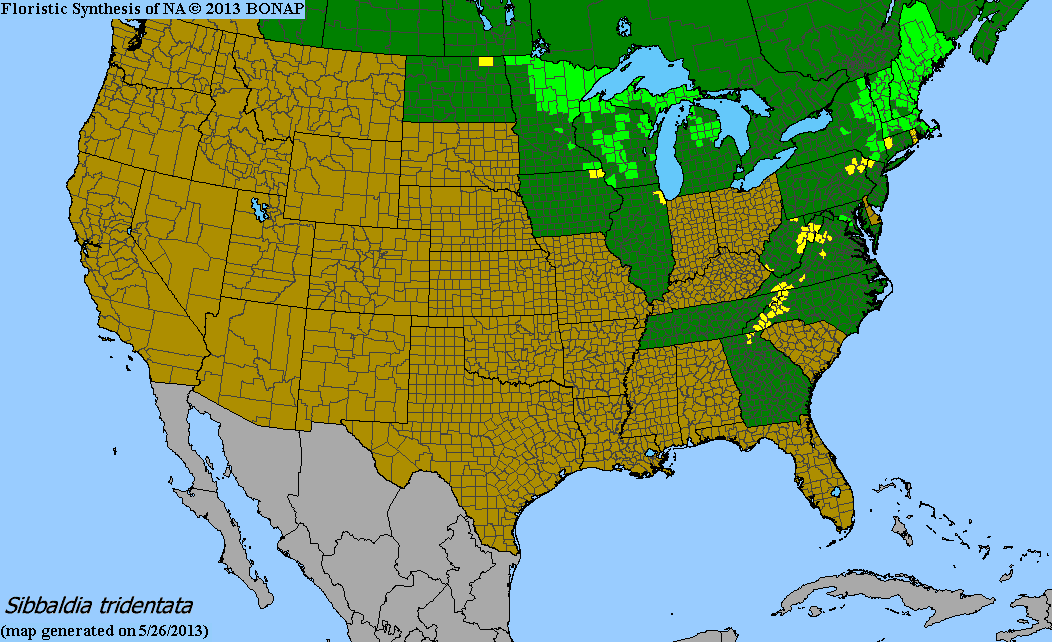
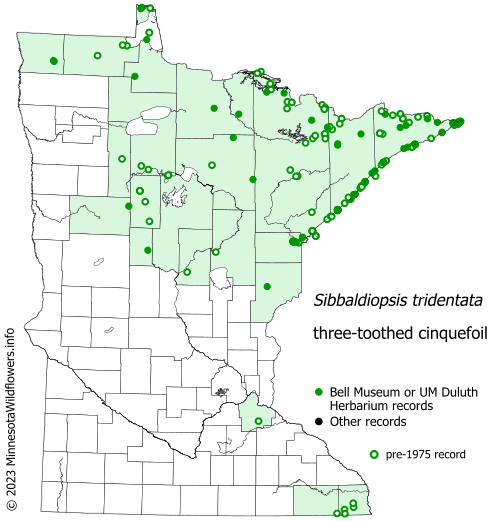
maps used with permission from MN Wildflowers
Sibbaldiopsis tridentata Gallery
Sibbaldiopsis tridentata Gallery
